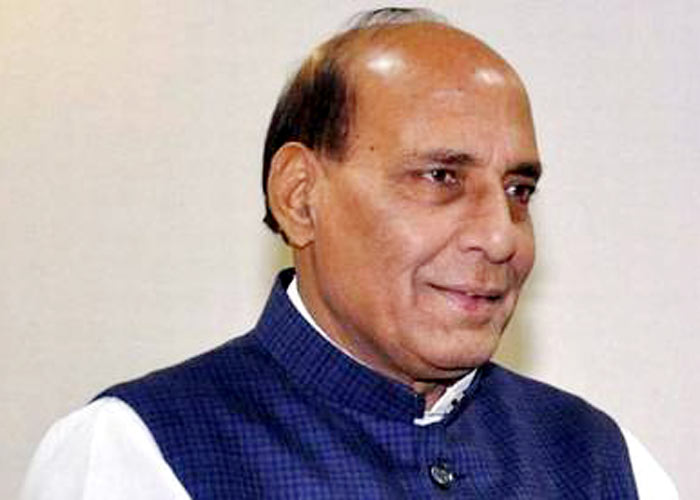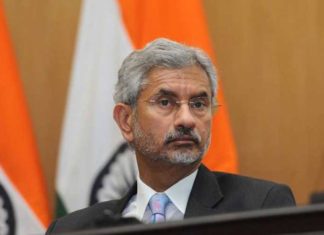New Delhi, Feb 11, 2021-
India and China have reached an agreement on disengagement in the north and south banks of Pangong Lake in eastern Ladakh, said Defence Minister Rajnath Singh in the Upper House of Parliament on Thursday making it clear that India has not conceded anything during these talks.
Chinese troops will move back to Finger 8 and Indian troops will pull back to the Dhan Singh Thapa post between Finger 2 and 3 of the north bank of Pangong Tso, said Singh adding that there would be temporary moratorium on military activities, including patrolling to the traditional areas.
The mountain spur jutting into the lake is referred to as Finger in military parlance. The north bank of the lake is divided into 8 Fingers. India claims its territory till Finger 8 but China breached and came up till Finger 4.
The minister said: “The Chinese side will keep its troop presence in the North Bank area to the east of Finger 8. Reciprocally, the Indian troops will be based at their permanent base at Dhan Singh Thapa Post near Finger 3.”
The minister said that both the countries also agreed to have a temporary moratorium on military activities on both sides of the North Bank, including patrolling the traditional areas.
Patrolling will be resumed only when both sides reach an agreement in diplomatic and military talks that would be held subsequently.
The minister said a similar action would be taken in the South Bank area by both sides.
On August 30, India had occupied critical mountain heights on the southern bank of the Pangong Lake like Rechin La, Rezang La, Mukpari, and Tabletop that were unmanned till then. India also made some deployments near the Blacktop. The dominance at these peaks allowed India to dominate Spanggur Gap under Chinese control and also the Moldo garrison on the Chinese side.
As per the minister, Indian troops have now to withdraw from these heights also.
“These are mutual and reciprocal steps and any structures that had been built by both sides since April 2020 in both North and South Bank area will be removed and the land forms will be restored,” the defence minister said.
He said that the disengagement is result of a well-thought out approach and sustained talks with the Chinese side.
The minister also informed the House that it has also agreed to convene the next meeting of the senior commanders within 48 hours after the complete disengagement in the Pangong Lake area so as to address and resolve all other remaining issues.
“The agreement that we have been able to reach with the Chinese side for disengagement in the Pangong lake area envisages that both sides will cease their forward deployments in a phased, coordinated and verified manner,” he said.
The implementation of this agreement started on Wednesday. It will substantially restore the situation to existing prior to commencement of the standoff last year.
The minister also pointed that there were still “some outstanding issues” with regard to deployment and patrolling at some other points along the Line of Actual Control in Eastern Ladakh. “These will be the focus of further discussions with the Chinese side,” said the minister.
During military and diplomatic talks, both the countries have agreed that both sides should achieve complete disengagement at the earliest and abide fully by the bilateral agreements and protocols.
“By now, the Chinese side is also fully aware of our resolve. It is therefore our expectation that the Chinese side will work with us in full sincerity to resolve these remaining issues,” he said.
He also paid gratitude to the armed forces who have shown grit and resolve under these extremely harsh climatic conditions of Ladakh which has resulted in the present agreement.
He also appraised the House that the Chinese side has since April and May 2020 amassed large number of troops and armaments in the border areas adjacent to Eastern Ladakh and also made several attempts to transgress the Line of Actual Control (LAC) in various parts. “These actions of the Chinese side had been detected and appropriately responded to by our armed forces,” he recalled.
The minister said that the House and the nation have paid homage to the brave Indian soldiers who made the supreme sacrifice and laid down their lives in the cause of defending the territorial integrity of India when on June 15, 2020 during a clash with Chinese People’s Liberation Army, 20 Indian soldiers laid down their lives.
Talking further about the disengagement process, he said that since last September, both sides have maintained communication with each other through military and diplomatic channels.
He also appraised the House about China’s illegal occupation of Indian territory. China illegally occupied approximately 38,000 sq. kms in the Union Territory of Ladakh, mainly during the 1962 conflict. In addition, under the so-called Sino-Pakistan ‘Boundary Agreement’ of 1963, Pakistan illegally ceded 5,180 sq. km of Indian territory in Pakistan Occupied Kashmir to China, the minister said.
China, thus is in illegal occupation of more than 43,000 sq. km of Indian territory. It also claims approximately 90,000 sq. kms. of Indian territory in the Eastern Sector of the India-China boundary in Arunachal Pradesh. India has never accepted this illegal occupation of Indian territory or the unjustified claims, he said.
The minister said that India has consistently maintained that while bilateral relations can develop in parallel with discussions on resolving the boundary question, any serious disturbance in peace and tranquility along the LAC in the border areas is bound to have adverse implications for the direction of bilateral ties.
The actions by the Chinese side since last year have seriously disturbed peace and tranquility in the region. Consequently they have also had an impact on the overall relationship.
Last year there were several friction areas in Eastern Ladakh along the LAC. In addition, the Chinese side had mobilized a large number of troops and armaments along the LAC as well as in the depth areas. Indian armed forces too had made adequate and effective counter deployments in these areas to ensure that India’s security interests were fully protected.
He said that Indian armed forces had responded to the challenges posed by the unilateral Chinese action and have shown valour and courage on both the South and North banks of Pangong Tso.
He said that India has maintained diplomatic and military engagement with the Chinese side.
In these discussions, India has maintained the three key principles that determine the approach: both sides should strictly respect and observe the LAC; neither side should attempt to alter the status quo unilaterally; and all agreements and understandings between the two sides must be fully abided by in their entirety.
Since September 2020, based on the policy guidance, military and diplomatic officials of both sides have met several times to work out a mutually acceptable solution for disengagement. (Agency)






































































